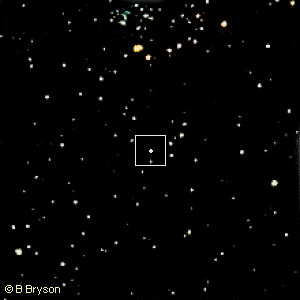Scale: 1016 meters = 10 Pm = 10 petameters (Approximately 1 light year)
The Oort CloudThe Sun has become the brightest star in the sky. Now just two light years away, we are closer to the Sun than to any other star. In this image the size of the Sun is only an indication of its brightness. In reality, the entire solar system is smaller than a single pixel at this scale. Imagine a cube of space 10 light years on a side (the last image). In that volume there are just 11 other stars -- all of them either red dwarfs or binary or multiple star systems. There is no other lone star like our Sun within the nearest 1000 cubic light years of space. At the current scale -- just one cubic light year -- the entire solar system is still too small to be seen. The emptiness of space is humbling. We have reached the fringes of the Sun's gravitational influence, the Oort Cloud. It is believed that the Sun has a spherical halo of orbiting bits of rock and ice -- the source for the occasional comets that sporadically appear in our skies. These proto-comets are much too small to be seen in the dim light of the Sun at this distance. To get some perspective on the vastness of space, consider this: In 1990 Voyager 2 passed under the orbit of Pluto on its way out of the solar system. To reach the outer edge of the Oort cloud two light years from Earth will take Voyager about 40 000 years! Copyright © 2016 by Bruce Bryson |
